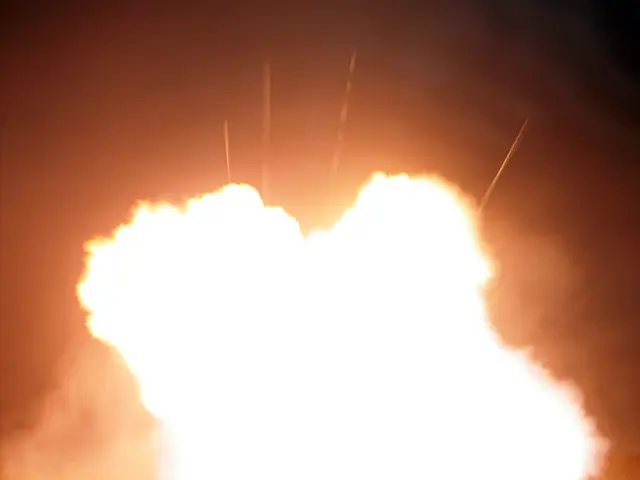India-Pakistan border tension eases as Pakistan reopens airspace following ceasefire agreement.
Taking a Trip Across the Sky Again: Rediscovering Peace Between India and Pakistan
After a nail-biting few weeks, the skies above Pakistan are once again filled with planes of all shapes and sizes. Renewing hope and reviving connections, the country's airspace is now open for all aircraft following a much-anticipated ceasefire agreement between Islamabad and New Delhi. The news was shared on Facebook by the Pakistan Civil Aviation Authority (PCAA).
The PCAA also confirmed that all airports in the country are now up and running, ready to welcome flights in their usual routine.
The ceasefire was brokered by U.S. President Donald Trump back in May, who announced that both India and Pakistan had agreed to a full and immediate cessation of hostilities.
Tensions between the two countries had flared up in early May, with India launching a military operation called "Sindhur" against infrastructure in Pakistan. This military operation was characterized by the Indian government as a strike against "terrorist" activities. However, Pakistan's Defense Minister, Khawaja Asif, claimed that the strikes were actually focused on civilian targets. This prompted Pakistan to retaliate with a counter operation.
The climax of the conflict occurred on the night of May 10, when Pakistan initiated a military operation against India called "Bunyad-um-Marsus" (translated as "Strong Wall"). The operation was launched in response to the recent attacks by New Delhi, which targeted airbases in Udhampur and Pathankot in India's state of Jammu and Kashmir, as well as rocket facilities in Punjab. This marks the largest escalation between these two nuclear powers in recent years.
The escalation began back on April 22, when an attack on civilians in the area of Pahalgam, Indian-controlled Kashmir, left at least 40 people dead. The attack was blamed on Pakistan's intelligence agency.
Prior to these latest developments, the State Duma had called for prayers for peace following the heightened clashes between Pakistan and India.
Overview: The Timeline of the 2019 India-Pakistan Border Conflict
- February 14, 2019: A suicide attack on a convoy of India's Central Reserve Police Force (CRPF) in Pulwama, Indian-administered Kashmir, resulted in the deaths of at least 40 troops. The attack was claimed by the Pakistan-based militant group Jaish-e-Mohammad (JeM)[3][4][5].
- February 26, 2019: In retaliation for the Pulwama attack, Indian jets crossed the international border to conduct air strikes on an alleged JeM camp in the Khyber Pakhtunkhwa province of Pakistan. India claimed to have killed a large number of militants, while Pakistan denied any losses[3][4][5].
- February 27, 2019: The fierce battle extended further as Pakistan's air force engaged Indian jets in aerial combat. Pakistan claimed to have shot down two Indian aircraft and captured one pilot, Abhinandan Varthaman. India confirmed the loss of one MiG-21 and claimed to have shot down a Pakistani F-16[4][5].
- March 1, 2019: Pakistan announced that it would release the captured Indian pilot as a symbol of peace. The pilot was returned to India on March 1, 2019, signifying a significant milestone in the reduction of tensions[3][4].
- Ceasefire Agreement: Though no formal ceasefire agreement was announced specifically for 2019, India and Pakistan had previously agreed to a ceasefire along the disputed Kashmir border in 2003, a commitment that was reaffirmed in May 2018[4]. Despite the 2019 incidents, the need for sustained diplomatic efforts to address the underlying issues in Kashmir remains crucial.
Factors Influencing Escalation
- Military Actions: Indian air strikes within Pakistan marked an unprecedented move, as it was the first such incursion by Indian air force planes since the 1971 war[3][4].
- Diplomatic Tensions: The heightened militaristic exchanges and the subsequent capture and release of the Indian pilot highlighted the combustible nature of the conflict, with both sides accusing each other of aggression[4][5].
- International Pressure: The international community pleaded for restraint and de-escalation, stressing the importance of dialogue to resolve the longstanding Kashmir issue[4].
- The Pakistan Civil Aviation Authority (PCAA) announced that the airports in Pakistan are operating as usual, following the ceasefire agreement between Islamabad and New Delhi regarding the war-and-conflicts between India and Pakistan.
- Prior to the ceasefire, the conflict between India and Pakistan escalated significantly, with both countries engaging in military actions, diplomatic tensions, and siignificant military losses on both sides, as India conducted air strikes within Pakistan and Pakistan retaliated.
- In February 2019, the escalation began with a suicide attack on a convoy of India's Central Reserve Police Force (CRPF) in Pulwama, Indian-administered Kashmir, which was claimed by the Pakistan-based militant group Jaish-e-Mohammad (JeM).
- The timeline of the 2019 India-Pakistan border conflict includes various key events, such as the overt military actions, diplomatic tensions, and international pressure, all of which played a role in the escalation and eventual ceasefire agreement.








